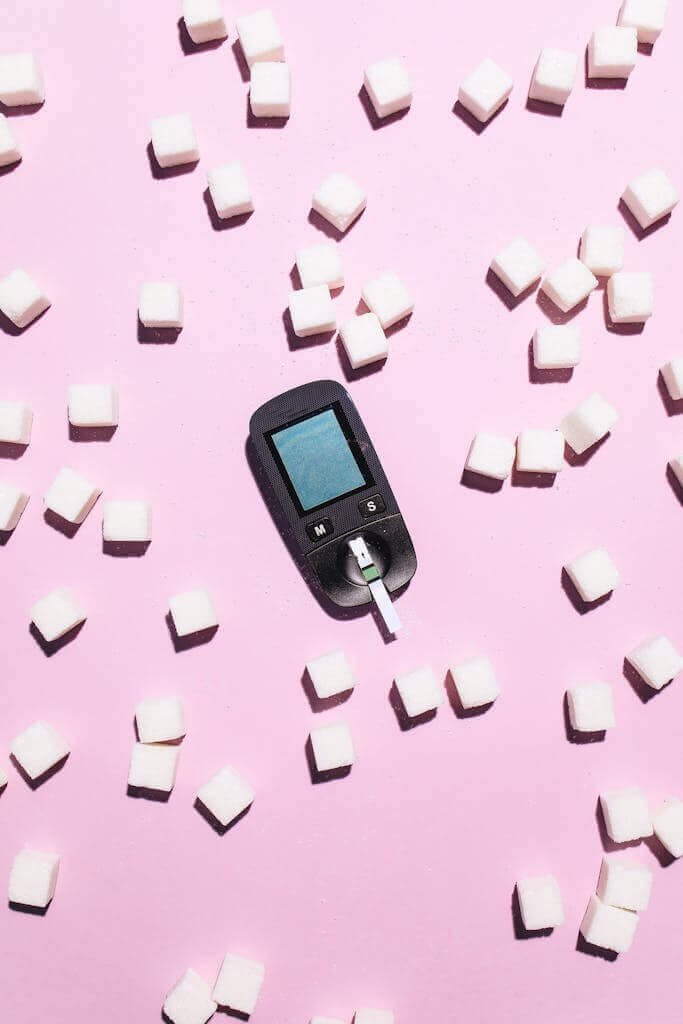Prosthetic Innovations: Restoring Mobility After Diabetes-Related Amputations
In a world where technology is constantly evolving, prosthetic innovations have become a beacon of hope for individuals facing mobility challenges post-diabetes-related amputations.
Imagine a future where advanced prosthetics not only restore movement but also enhance functionality and comfort.
As you explore the realm of customized solutions and cutting-edge developments in prosthetic technology, you'll uncover how these innovations are revolutionizing the way individuals regain their independence and improve their quality of life.
Discover the possibilities that lie ahead in the journey towards a brighter future for amputees seeking to reclaim their mobility.
The Impact of Diabetes-Related Amputations
If you have diabetes-related amputations, you may experience significant physical and emotional challenges. The loss of a limb can profoundly impact your daily life, from simple tasks like walking to more complex activities.
Physically, adjusting to life post-amputation can be demanding as you navigate mobility issues and relearn basic movements. Simple actions such as getting dressed or preparing meals may require adaptation.
Emotionally, coping with the loss of a limb can lead to feelings of grief, frustration, and even depression. Accepting and adapting to these changes takes time and support. It's essential to prioritize your mental well-being during this period of adjustment.
Seeking guidance from healthcare professionals, support groups, or therapists can provide valuable assistance in navigating these emotional challenges. Remember, it's okay to ask for help and take things one step at a time as you navigate the impact of diabetes-related amputations.
Advancements in Prosthetic Technology
After experiencing the challenges of diabetes-related amputations, exploring the advancements in prosthetic technology can offer new opportunities for enhancing mobility and quality of life. Recent innovations in prosthetic technology have revolutionized the way individuals with amputations can regain functionality and independence.
One significant advancement is the development of bionic limbs that mimic natural movements more closely than ever before. These prosthetics use advanced sensors and microprocessors to interpret signals from the user's muscles, allowing for more intuitive control of the prosthetic limb. Additionally, materials such as carbon fiber have greatly improved the strength and durability of prosthetic limbs while also making them lighter and more comfortable to wear.
Furthermore, the integration of robotics and artificial intelligence has led to prosthetic limbs that can adapt to different activities and terrains, providing users with a more seamless and natural walking experience. These advancements in prosthetic technology not only restore mobility but also empower individuals to lead more active and fulfilling lives post-amputation.
Enhancing Mobility and Independence
When facing mobility challenges post-amputation, mobility aids play a crucial role in restoring your independence.
By embracing technological advancements in prosthetics, you can significantly enhance your ability to move freely and regain control over your daily activities.
These innovations not only improve mobility but also empower you to lead a more autonomous and fulfilling life.
Mobility Aids Importance
Utilizing mobility aids is crucial for enhancing independence and mobility following diabetes-related amputations. These aids, such as canes, crutches, walkers, and wheelchairs, play a vital role in helping you navigate your surroundings safely and efficiently.
By using these tools, you can regain a sense of freedom and autonomy in your daily activities. Mobility aids provide stability and support, reducing the risk of falls and allowing you to move with confidence. They enable you to participate in social events, run errands, and engage in recreational activities, promoting a more active lifestyle.
Embracing mobility aids isn't a sign of weakness but a step towards regaining control over your mobility and independence after amputation.
Independence Through Technology
Enhancing mobility and independence through technology is a transformative way for individuals to regain control and autonomy after diabetes-related amputations.
Advanced prosthetic limbs equipped with sensors and microprocessors enable smoother movements, enhancing your ability to navigate various terrains with confidence.
With the integration of Bluetooth technology, you can easily adjust settings or receive notifications directly on your device, promoting seamless interaction with your prosthetic.
These innovations not only improve your mobility but also foster independence by allowing you to perform daily tasks more efficiently.
Embracing these technological advancements empowers you to lead a more active lifestyle and pursue your passions with newfound freedom.
As you adapt to these innovations, you'll experience a significant enhancement in your quality of life post-amputation.
Customized Solutions for Amputees
Amputees can benefit greatly from personalized prosthetic solutions tailored to their specific needs and lifestyle. Customized prosthetics offer a level of comfort, functionality, and mobility that standard options may not provide. By working closely with prosthetists, individuals can ensure that their prosthetic devices are designed to fit perfectly, taking into account factors like the residual limb shape, skin sensitivity, and activity level.
One significant advantage of customized solutions is the ability to incorporate advanced technologies that cater to individual requirements. For example, if you have a highly active lifestyle, a prosthetic limb with shock-absorbing features and durable materials may be recommended to withstand frequent use. Likewise, if you have specific cosmetic preferences, personalized prosthetics can be designed to match your skin tone and appearance seamlessly.
Improving Quality of Life
To enhance the overall well-being of individuals who've undergone diabetes-related amputations, personalized prosthetic solutions play a pivotal role in improving their quality of life. These tailored prosthetics are designed to not only restore mobility but also to promote independence and confidence in daily activities. By customizing the prosthetic devices to fit your specific needs and preferences, you can experience a significant improvement in comfort and functionality, allowing you to engage more actively in various aspects of life.
Moreover, these personalized prosthetic solutions can help you regain a sense of normalcy and self-esteem. By adapting the prosthetics to your unique body structure and mobility requirements, you can enjoy a better quality of life and participate more fully in social interactions and recreational activities. The ability to move comfortably and naturally with the support of these customized prosthetic devices can have a profound impact on your overall well-being, fostering a positive outlook and a renewed sense of freedom. Embracing these innovative prosthetic solutions can truly make a difference in enhancing your quality of life after diabetes-related amputations.
Looking Towards a Brighter Future
As you look ahead, consider the exciting developments in prosthetic technology. Innovations on the horizon promise enhanced mobility and functionality for amputees.
Stay tuned for the remarkable advancements that will shape a brighter future for those in need of prosthetic solutions.
Future Prosthetic Advancements
Looking ahead, the field of prosthetics shows promising advancements that aim to enhance the quality of life for individuals who've undergone amputations due to diabetes-related complications. Innovations in prosthetic technology are pushing boundaries to provide more natural movements and improved comfort.
Researchers are focusing on developing prosthetics that can communicate directly with the brain, enabling users to control them seamlessly. Additionally, advancements in materials science are leading to lighter and more durable prosthetic limbs. 3D printing is revolutionizing the customization process, allowing for prosthetics that fit better and are tailored to individual needs.
These future advancements hold the potential to significantly improve the mobility and overall well-being of amputees, offering a brighter outlook for those living with diabetes-related amputations.
Enhancing Mobility Options
Enhance your mobility options for a brighter future through advancements in prosthetic technology. With the latest innovations, prosthetic devices are becoming more sophisticated, providing improved functionality and comfort.
Modern prosthetics offer enhanced mobility, allowing you to move more naturally and confidently. Lightweight materials and advanced design techniques contribute to a better fit and increased durability, enabling you to engage in various activities with ease. Customizable features cater to your specific needs, whether it's for daily tasks or sports activities.
Enhanced control systems and responsive sensors further enhance your mobility experience, making it easier to navigate different terrains and situations. Embrace these advancements in prosthetic technology to enhance your mobility and lead a more fulfilling life.
Promising Technologies Ahead
Explore the upcoming advancements in prosthetic technologies that promise a brighter future for individuals seeking improved mobility and functionality after diabetes-related amputations.
Cutting-edge developments include mind-controlled prosthetics that respond to neural signals, offering more natural movements. Additionally, 3D printing allows for customized prosthetic designs, ensuring better comfort and fit.
Advanced materials like carbon fiber provide durability without compromising flexibility, enhancing overall performance. Miniaturized sensors embedded in prosthetics enable real-time feedback, improving balance and gait.
Furthermore, prosthetic sockets with adjustable interfaces cater to individual comfort levels, reducing discomfort and skin issues. These innovations signify a future where prosthetic users can experience enhanced mobility, comfort, and functionality, empowering them to lead fulfilling lives despite physical challenges.
Frequently Asked Questions
Can Prosthetic Limbs Fully Restore the Same Level of Mobility as Before the Amputation?
Prosthetic limbs can restore mobility after diabetes-related amputations, enabling you to regain a similar level of function as before. Advances in technology continue to improve prosthetic devices, offering better mobility and quality of life.
How Long Does It Typically Take to Adjust to Using a Prosthetic Limb After an Amputation?
Adjusting to a prosthetic limb after an amputation typically takes time and patience. With practice and support, you can expect to adapt within a few months. Regular use and working closely with your healthcare team are essential.
Are There Any Specific Challenges or Limitations for Diabetic Patients Using Prosthetic Technology?
When using prosthetic technology, diabetic patients may face challenges like skin irritation, slower wound healing, and increased risk of infections. It's important to work closely with healthcare providers to address these specific concerns for optimal mobility.
What Are Some Common Misconceptions About Prosthetic Innovations for Diabetes-Related Amputations?
Prosthetic innovations for diabetes-related amputations dispel misconceptions. They offer enhanced mobility, comfort, and natural movement. Embrace these advancements to regain independence and live life to the fullest, breaking free from outdated beliefs.
How Do Prosthetic Solutions Differ for Individuals With Different Levels of Amputation (E.G. Below-The-Knee Vs Above-The-Knee)?
When it comes to prosthetic solutions for different levels of amputation, below-the-knee options focus on maintaining natural gait and maximizing comfort, while above-the-knee prosthetics prioritize stability, control, and weight distribution for improved mobility.
Conclusion
As you navigate through the world with your new prosthetic limb, you'll feel like a bird spreading its wings after a long winter.
With advancements in prosthetic technology, restoring mobility after diabetes-related amputations is now more achievable than ever.
Embrace your newfound independence and take flight towards a brighter future filled with endless possibilities.
Your journey may have had obstacles, but now you have the tools to soar to new heights.






